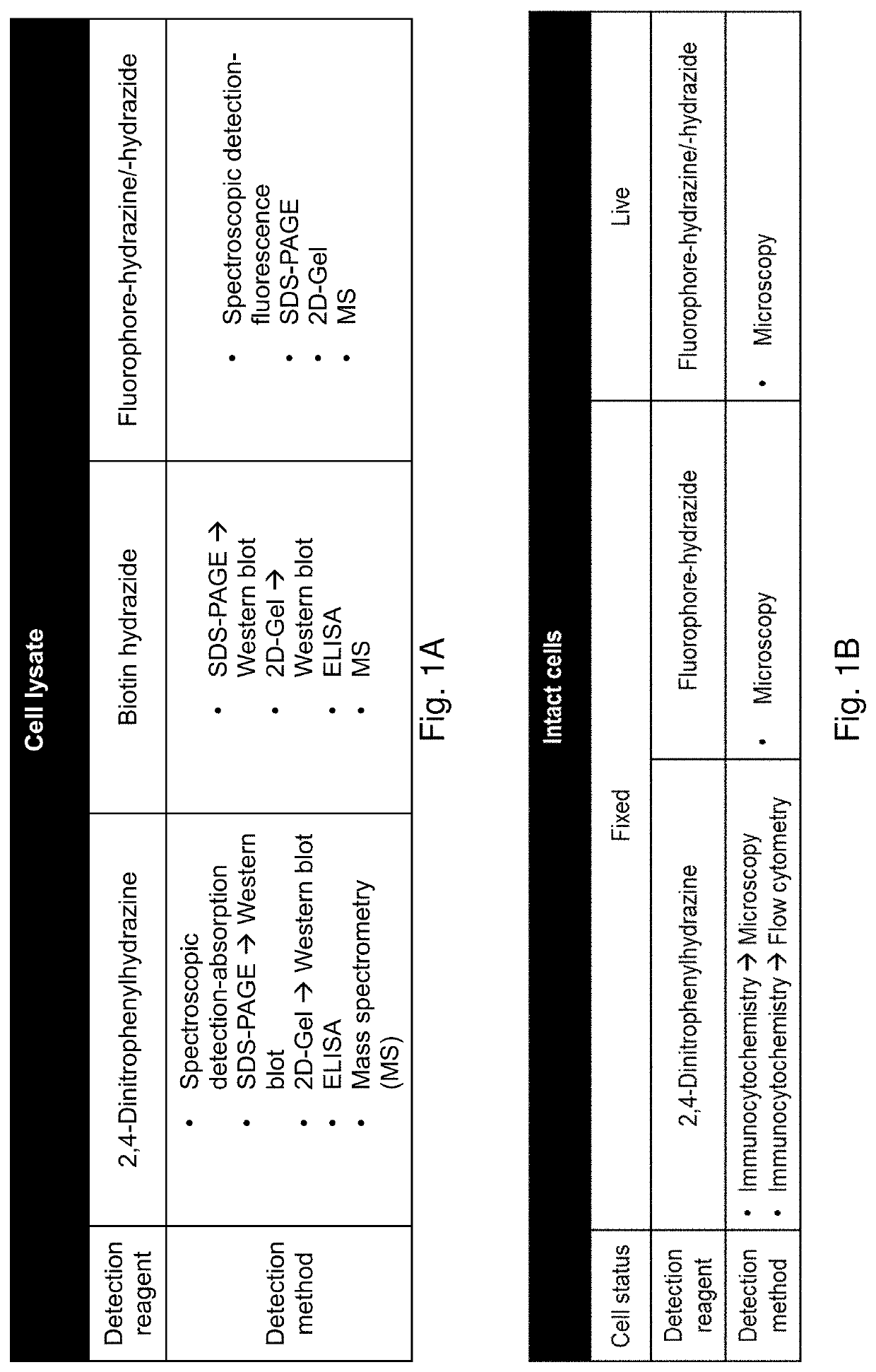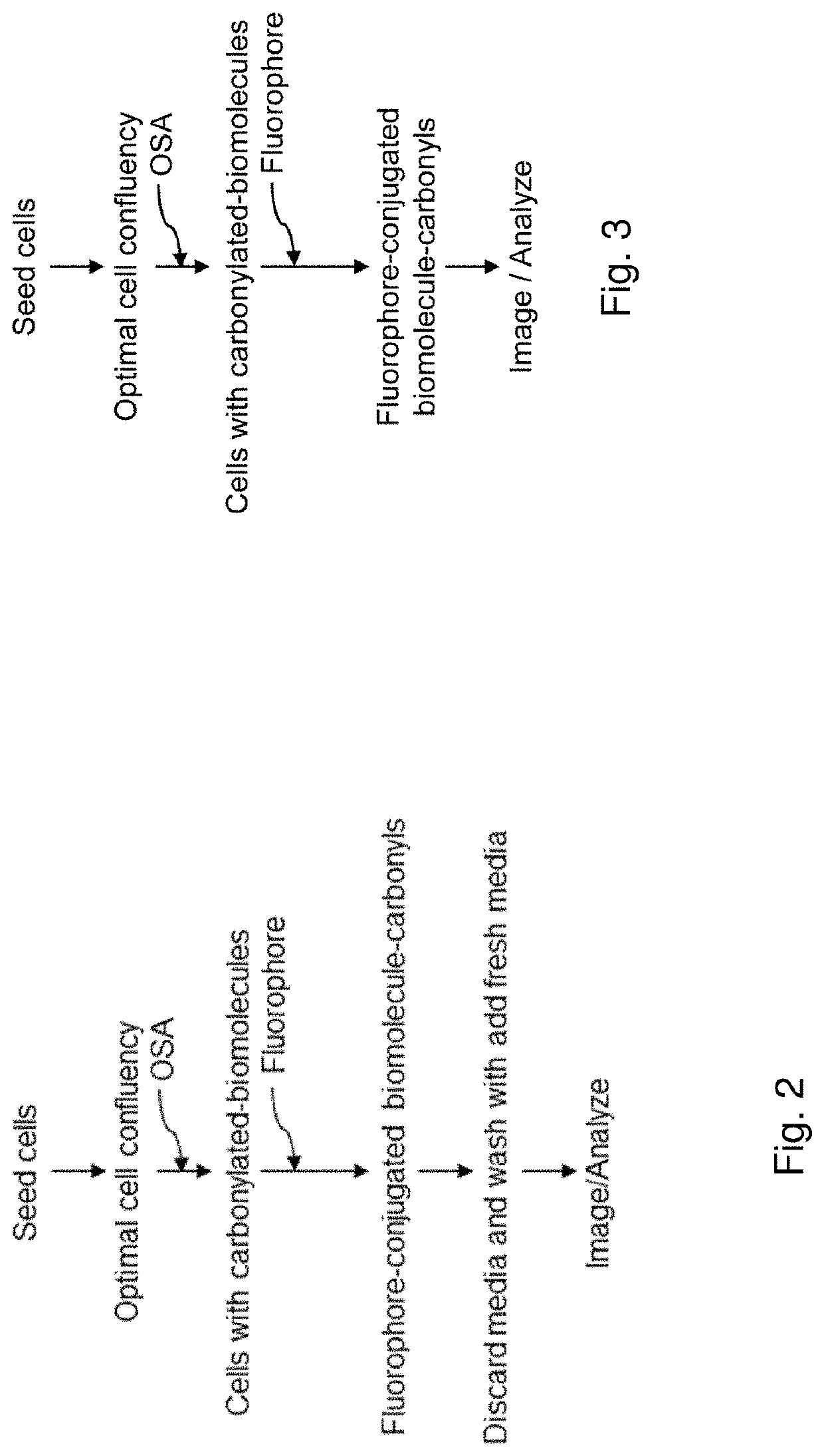Methods and compositions for detection and visualization of oxidative stress-induced carbonylation in cells
a technology of oxidative stress and carbonylation, applied in the field of hydrogenazine fluorophore, can solve the problems of tedious and long assays involving immunocytochemistry or immunochemical/chemical analysis, and achieve the effect of improving the detection efficiency and reducing the number of assays
- Summary
- Abstract
- Description
- Claims
- Application Information
AI Technical Summary
Benefits of technology
Problems solved by technology
Method used
Image
Examples
Embodiment Construction
[0167]While preferred embodiments of the present invention have been shown and described herein, it will be obvious to those skilled in the art that such embodiments are provided by way of example only. Numerous variations, changes, and substitutions will now occur to those skilled in the art without departing from the invention. It should be understood that various alternatives to the embodiments of the invention described herein may be employed in practicing the invention. It is intended that the following claims define the scope of the invention and that methods and structures within the scope of these claims and their equivalents be covered thereby.
[0168]Fluorophores e.g., 7-Diethylaminocoumarin-3-carboxylic acid, hydrazide (DCCH, Millipore Sigma), BODIPYTM FL hydrazide, BODIPYH (ThermoFisher), Texas Red™ hydrazide, TxRH (ThermoFisher) or 7-Hydrazinyl-4-trifluoromethylcoumarin (TFCH, synthetic) are solubilized in DMSO (Acros), and diluted with DMSO to a final concentration of 2 ...
PUM
| Property | Measurement | Unit |
|---|---|---|
| pH | aaaaa | aaaaa |
| wavelength | aaaaa | aaaaa |
| wavelength | aaaaa | aaaaa |
Abstract
Description
Claims
Application Information
 Login to View More
Login to View More - R&D
- Intellectual Property
- Life Sciences
- Materials
- Tech Scout
- Unparalleled Data Quality
- Higher Quality Content
- 60% Fewer Hallucinations
Browse by: Latest US Patents, China's latest patents, Technical Efficacy Thesaurus, Application Domain, Technology Topic, Popular Technical Reports.
© 2025 PatSnap. All rights reserved.Legal|Privacy policy|Modern Slavery Act Transparency Statement|Sitemap|About US| Contact US: help@patsnap.com



